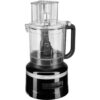What is Contribution Margin Per Unit? Definition Meaning Example
The Finance Weekly is designed to help financial professionals make confident decisions online, this website contains information about FP&A products and services. Certain details, including but not limited to prices and special offers, are sometimes provided to us directly from our partners and are dynamic and subject to change at any time without prior notice. Though based on meticulous research, the information we share does not constitute legal or professional advice or forecast, and should not be treated as such.
Use of Contribution Formula
Another common example of a fixed cost is the rent paid for a business space. A store owner will pay a fixed monthly cost for the store space regardless of how many goods are sold. This metric is typically used to calculate the break even point of a production process and set the pricing of a product. They also use this to forecast the profits of the budgeted production numbers after the prices have been set. Contribution margin analysis is a measure of operating leverage; it measures how growth in sales translates to growth in profits. A negative contribution margin tends to indicate negative performance for a product or service, while a positive contribution margin indicates the inverse.
Accounting Dictionary
However, it may be best to avoid using a contribution margin by itself, particularly if you want to evaluate the financial health of your entire operation. Instead, consider using contribution margin as an element in a comprehensive financial analysis. This is one reason economies of scale are so popular and effective; at a certain point, even expensive products can become profitable if you make and sell enough. You can also use contribution margin to tell you whether you have priced a product accurately relative to your profit goals.
Strategies to Reduce Inventory Holding Costs in 2024
Furthermore, an increase in the contribution margin increases the amount of profit as well. Furthermore, it also gives you an understanding of the amount of profit you can generate after covering your fixed cost. Such an analysis would help you to undertake better decisions regarding where and how to sell your products. Knowing how to calculate the contribution margin is an invaluable skill for managers, as using it allows for the easy computation of break-evens and target income sales. This, in turn, can help people make better decisions regarding product & service pricing, product lines, and sales commissions or bonuses.
How to calculate a contribution margin
Buying items such as machinery is a typical example of a fixed cost, specifically a one-time fixed cost. Regardless of how much it is used and how many units are sold, its cost remains the same. However, these fixed costs become a smaller percentage of each unit’s cost as the number of units sold increases. The contribution margin is computed as the selling price per unit, minus the variable cost per unit. Also known as dollar contribution per unit, the measure indicates how a particular product contributes to the overall profit of the company. The contribution how to adjust an entry for unearned revenue chron com margin income statement separates the fixed and variables costs on the face of the income statement.
Contribution Margin Per Unit:
Still, of course, this is just one of the critical financial metrics you need to master as a business owner. They can use that information to determine whether the company prices its products accurately or is likely to turn a profit without looking at that company’s balance sheet or other financial information. You can use contribution margin to help you make intelligent business decisions, especially concerning the kinds of products you make and how you price those products. Imagine that you have a machine that creates new cups, and it costs $20,000.
This resulting margin indicates the amount of money available with your business to pay for its fixed expenses and earn profit. However, ink pen production will be impossible without the manufacturing machine which comes at a fixed cost of $10,000. This cost of the machine represents a fixed cost (and not a variable cost) as its charges do not increase based on the units produced.
Some other helpful tools for business
- You may need to use the contribution margin formula for your company’s net income statements, net sales or net profit sheets, gross margin, cash flow, and other financial statements or financial ratios.
- The more customers she serves, the more food and beverages she must buy.
- Overall, the unit contribution margin provides valuable insights into the financial performance of individual products or units and helps guide strategic decision-making within organizations.
- Also, it is important to calculate the contribution margin to know the price at which you need to sell your goods and services to earn profits.
- More importantly, your company’s contribution margin can tell you how much profit potential a product has after accounting for specific costs.
- Typically, variable costs are only comprised of direct materials, any supplies that would not be consumed if the products were not manufactured, commissions, and piece rate wages.
Next, the CM ratio can be calculated by dividing the amount from the prior step by the price per unit. The analysis of the contribution margin facilitates a more in-depth, granular understanding of a company’s unit economics (and cost structure). The best contribution margin is 100%, so the closer the contribution margin is to 100%, the better. The leverage ratio definition higher the number, the better a company is at covering its overhead costs with money on hand. The contribution margin ratio is calculated as (Revenue – Variable Costs) / Revenue.
- The contribution margin ratio is also known as the profit volume ratio.
- Thus, it should not include any overhead cost, and should rarely include direct labor costs.
- The difference between fixed and variable costs has to do with their correlation to the production levels of a company.
- Management should also use different variations of the CM formula to analyze departments and product lines on a trending basis like the following.
- At a contribution margin ratio of \(80\%\), approximately \(\$0.80\) of each sales dollar generated by the sale of a Blue Jay Model is available to cover fixed expenses and contribute to profit.
Contribution Margin Ratio:
Further, it is impossible for you bookkeeping basics to determine the number of units that you must sell to cover all your costs or generate profit. This is because the breakeven point indicates whether your company can cover its fixed cost without any additional funding from outside financiers. Thus, it will help you to evaluate your past performance and forecast your future profitability.
The contribution margin is different from the gross profit margin, the difference between sales revenue and the cost of goods sold. While contribution margins only count the variable costs, the gross profit margin includes all of the costs that a company incurs in order to make sales. The difference between fixed and variable costs has to do with their correlation to the production levels of a company. As we said earlier, variable costs have a direct relationship with production levels. The contribution margin formula is calculated by subtracting total variable costs from net sales revenue. As mentioned above, contribution margin refers to the difference between sales revenue and variable costs of producing goods or services.
The key component of the contribution per unit calculation that can cause difficulty is the variable cost. This should only include those costs that vary directly with revenues. Thus, it should not include any overhead cost, and should rarely include direct labor costs. Direct labor costs are actually a fixed cost when a production line is used, since it requires a certain fixed amount of staffing to operate the line, irrespective of the number of units produced. Direct materials are often typical variable costs, because you normally use more direct materials when you produce more items.
It offers insight into how your company’s products and sales fit into the bigger picture of your business. If the contribution margin for a particular product is low or negative, it’s a sign that the product isn’t helping your company make a profit and should be sold at a different price point or not at all. It’s also a helpful metric to track how sales affect profits over time. In the same example, CMR per unit is $100-$40/$100, which is equal to 0.60 or 60%.
In the Dobson Books Company example, the total variable costs of selling $200,000 worth of books were $80,000. Remember, the per-unit variable cost of producing a single unit of your product in a particular production schedule remains constant. When only one product is being sold, the concept can also be used to estimate the number of units that must be sold so that a business as a whole can break even. For example, if a business has $10,000 of fixed costs and each unit sold generates a contribution margin of $5, the company must sell 2,000 units in order to break even.
Thus, the concept of contribution margin is used to determine the minimum price at which you should sell your goods or services to cover its costs. Therefore, it is not advised to continue selling your product if your contribution margin ratio is too low or negative. This is because it would be quite challenging for your business to earn profits over the long-term. The gross sales revenue refers to the total amount your business realizes from the sale of goods or services. That is it does not include any deductions like sales return and allowances.













